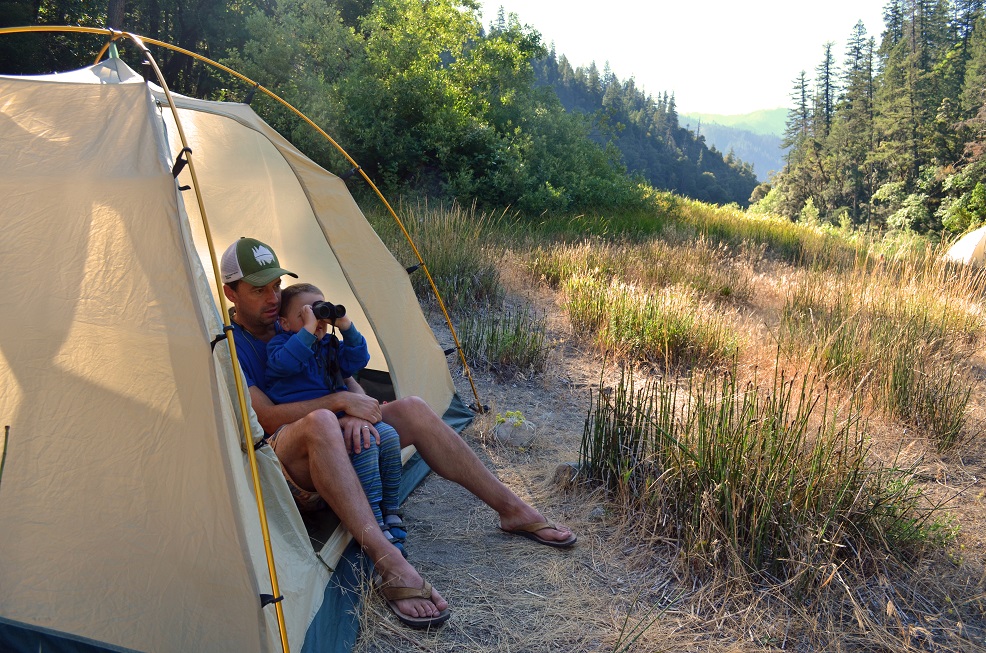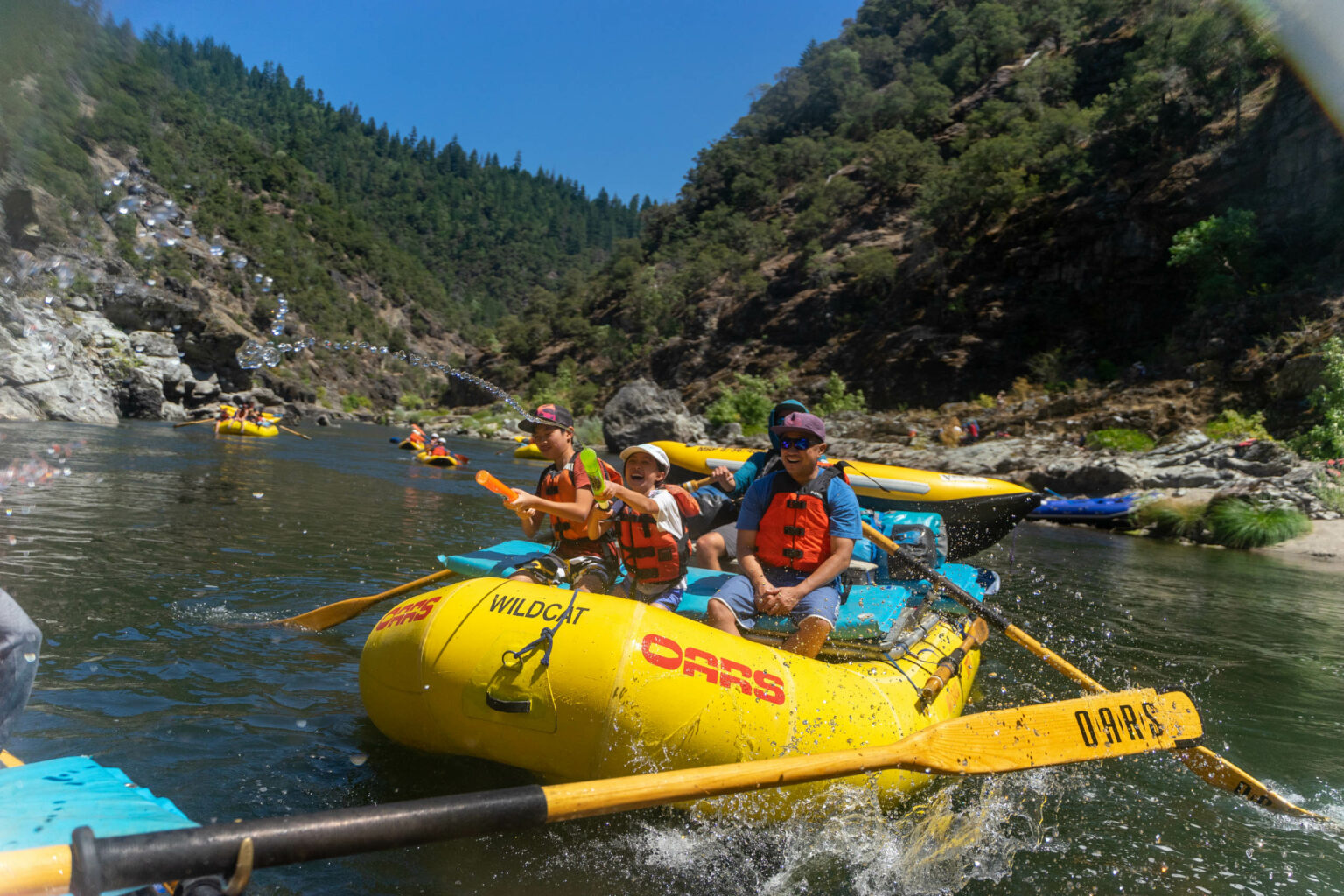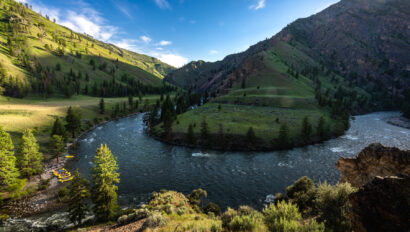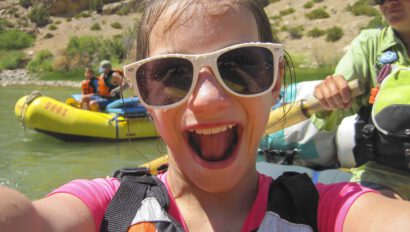The Nature Prescription


Author Richard Louv on trading screens for streams
In 1963, the Glen Canyon dam flooded one of the world’s great wild river runs. The disappearance of this ribbon of beauty left river-running pioneer George Wendt heartsick. He put his grief to work, joining other environmentalists in fierce and effective opposition to similar dams proposed for the Grand Canyon. The experience taught him a lifelong lesson.
“We lost Glen Canyon because people didn’t know about it,” he said later. “We almost lost the Grand Canyon and I just figured we need to take people to see these places because if we don’t see them, these places won’t exist in the future.”

In 1969, at the headwaters of ecotourism, Wendt founded OARS, guiding generations of adventurous families through the fierce beauty of the natural world. Wendt passed in 2016. But his legacy lives on through OARS.
During the 1960s, few people could have predicted the widespread challenge of nature-deficit disorder. In 2005, I introduced that term in the book Last Child in the Woods, not as an official medical diagnosis, but as a description of the human costs of alienation from nature, among them: diminished use of the senses, attention difficulties, and higher rates of physical and emotional illnesses. In that and subsequent books, I also warned that human disconnection from the natural world was accelerating, with profound implications for the future.
Wendt understood early and intuitively that our relationship with nature depends on this question: Will future generations fall in love with the natural world?
Making that connection is not as easy as it might seem to some. Because of time pressures, fear and inaccessibility, many people have a difficult time trading screens for streams (and other natural places), even occasionally, let alone for a multi-day river trip. But the investment in those days could change lives, especially if the experience inspires a healthy life-long habit.

In a single decade, the number of studies showing the benefits of nature connection has increased from two dozen to nearly 600. Time spent in nature is not a panacea, but the research indicates that experiences in the natural world may reduce the symptoms of ADHD, serve as a buffer to depression and anxiety, help prevent or reduce obesity and myopia, boost the immune system, improve social bonding and offer many other psychological and physical health benefits.
Time spent in nature can also stimulate the ability to learn and create, and can even help raise standardized test scores. Researchers at the University of Kansas (KU) concluded that after just a few days backpacking, young people showed significant cognitive improvement and a 50 percent boost in creativity. According to Ruth Ann Atchley, associate professor of cognitive/clinical psychology at KU, the effect “peaks after about three days of really getting away, turning off the cell phone, not hauling the iPad and not looking for internet coverage. It’s when you have an extended period of time surrounded by that softly fascinating environment that you start seeing all kinds of positive effects in how your mind works.”
In related work, researchers at the University of Rochester, in New York, report that exposure to the natural environment leads people to nurture close relationships with fellow human beings and to value community. The benefits can accrue through active outdoor sports, in wilderness or in nearby urban nature.
Several theories suggest why nature connection offers added benefit to physical exercise. Among them, attention-retention theory and the Biophilia Hypothesis, which holds that human beings are genetically hard-wired for an affiliation with nature. Some of the most important research is in the area of psychological health. “There is growing…empirical evidence to show that exposure to nature brings substantial mental health benefits,” according to researchers at the University of Essex. “Our findings suggest that priority should be given to developing the use of green exercise as a therapeutic intervention.”
Over the past decade, an international movement has emerged. Fostered by a wide array of groups ranging from the outdoor industry and conservation community to government agencies and healthcare organizations, the movement not only focuses on improving human health, but also on helping to create better relationships between people and the natural world.
This new nature movement is inspiring countless individuals to get outside in nature, and inspiring mayors, urban planners and policy makers to create more natural habitat—wildlife corridors, green roofs, and parks—especially in densely-populated urban neighborhoods.
In 2015, a prestigious, international group of scientists issued the Helsinki Alert of Biodiversity and Health, affirming the necessity of nearby nature to human health and the need for a new approach to urban planning and policies. In the Alert, published in The Annals of Medicine, the scientists stated, “National Health and Nature Programmes (action plans) are needed to increase the public awareness of nature’s health effects…It is especially important to target children and adolescents; both the environment and the youngsters would benefit.”
Nature connection may be just what the doctor ordered.
Few medications or prescriptions work both as prevention and therapy, according to G. Richard Olds, MD, Dean of the School of Medicine at the University of California, Riverside.
But be warned. Nature can be addictive. Dream Tree Film has launched a series of video commercials that include this witty caution about nature therapy: “Side effects may include spontaneous euphoria, taking yourself less seriously, and being in a good mood for no apparent reason. So, ask your doctor if Nature is right for you.”
George Wendt knew all about those enriching side effects.
Related Posts
Sign up for Our Newsletter



